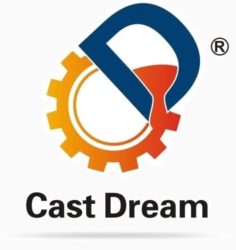Introduction
The lost wax process, also known as investment casting, is a centuries-old method that remains one of the most reliable and precise techniques for metal casting today. With applications ranging from industrial components to intricate art pieces, the lost wax process has stood the test of time and continues to evolve with modern manufacturing technologies.
In this article, we’ll dive into the details of the lost wax casting process, its benefits, and the role of casting product manufacturers in delivering high-quality, precision-engineered parts.
What is the Lost Wax Process?
The lost wax process is a metal casting technique used to create complex and detailed components. It involves the use of a wax pattern that is ultimately melted away to form a mold cavity, into which molten metal is poured. The process is highly valued for its ability to replicate intricate designs with minimal machining and post-processing.
How the Process Works:
- Wax Pattern Creation: A replica of the final product is created in wax. This can be done using molds or 3D printing.
- Assembly: For multiple castings, the wax patterns are attached to a central wax tree (sprue system) to allow for efficient metal flow during casting.
- Shell Building: The wax pattern is repeatedly dipped into a ceramic slurry and coated with fine refractory material to form a hard shell.
- Wax Removal: The ceramic shell is heated, and the wax is melted out, leaving behind a hollow mold.
- Metal Pouring: Molten metal is poured into the cavity to create the desired part.
- Cooling and Shell Removal: After the metal solidifies, the ceramic shell is broken off, and the casting is cleaned.
- Finishing: Final finishing steps like polishing, machining, or heat treatment may be applied as needed.
Applications of Lost Wax Casting
The lost wax process is versatile and used in a wide range of industries, including:
- Aerospace: Complex turbine blades and engine components.
- Automotive: Precision parts like gears, housings, and brackets.
- Jewelry: Intricate gold, silver, and platinum designs.
- Medical: Surgical instruments and implants.
- Art: Sculptures and decorative pieces.
Advantages of the Lost Wax Process
- Precision and Detail: Achieves intricate shapes and fine details that are difficult with other methods.
- Material Versatility: Suitable for various metals, including stainless steel, bronze, and aluminum.
- Minimal Waste: Excess material is reduced as the process allows for precise casting.
- Scalability: Suitable for both small-batch production and large-scale manufacturing.
- Surface Finish: Produces smooth surfaces with minimal post-casting machining.
Casting Product Manufacturers: The Backbone of Quality Casting
Casting product manufacturers play a crucial role in ensuring the success of the lost wax process. Their expertise, technology, and facilities enable the production of high-quality components tailored to industry needs.
Key Responsibilities of Casting Product Manufacturers:
- Design Expertise: Manufacturers work closely with clients to design molds and wax patterns that meet specific project requirements.
- Material Selection: They help in choosing the right metals and alloys based on the application, ensuring durability and performance.
- Quality Control: Advanced inspection techniques like X-ray and ultrasonic testing are employed to guarantee defect-free castings.
- Sustainability: Many manufacturers focus on recycling wax and reducing waste, making the process environmentally friendly.
Why Choose Lost Wax Casting for Metal Components?
Lost wax casting offers a unique combination of precision, versatility, and cost-effectiveness, making it the go-to method for industries that demand high-quality metal parts. Whether you’re in aerospace, automotive, or jewelry manufacturing, the lost wax process can help you achieve results that exceed expectations.
When working with a trusted casting product manufacturer, you gain access to decades of expertise, cutting-edge technology, and the ability to customize components to your exact specifications.
Conclusion
The lost wax process remains a cornerstone of modern metal casting, offering unparalleled precision and versatility. With the support of experienced casting product manufacturers, this age-old technique continues to meet the demands of today’s high-tech industries, delivering intricate and durable components.
If you’re looking for reliable solutions in metal casting, consider the lost wax process and partner with a casting product manufacturer to bring your designs to life with unmatched accuracy.




